The role of a CEQA Planner at Impact Sciences can be both immensely rewarding and challenging. Successful CEQA planners bring a wealth of knowledge, tenacity, and drive. They thrive on curiosity, and they are dedicated to analyzing projects and ultimately improving the daily lives of the communities they serve. With the unique experience of consulting for some of California’s most respected agencies, the CEQA Planner has become one of Impact Sciences more sought after careers, garnering hundreds of applications. A few cherished planners at Impact Sciences—Raul Castillo, Kay Real, and Annalie Sarrieddine—sat down with Kara Yates Hines, Director of Operations & Publications Manager, for a fun and lighthearted discussion of a typical day in the life of a CEQA Planner. The joys and the challenges—all was discussed.
Kara: So, in the morning, when you start your day, what’s the first thing you do to get into the swing of things? What’s at the top of your checklist?
Raul: Mondays are different, because obviously, we’re organizing for the week. If it’s during the week, I usually ask myself, “okay, what didn’t I finish up yesterday?” I’ll leave all my tabs open from the day before just so I know what I was working on. It’s pretty much a continuation of the day’s work before, because sections of environmental documents span for days. I have my coffee while I’m getting set up, and I usually have news articles and PBS news hour in the background. Current events keep me in the zone.
Annalie: I like listening to The Daily podcast while I start my day off in the morning. It lets me know what’s going on in the world in 45 minutes while I’m waking up and organizing what I’m going to get to first on the list of to do’s.
Kay: Yeah, I love that podcast. I usually only listen to that when I’m in the car in the mornings, which so far, I haven’t been recently. I get the New York Times daily briefing via the email in my inbox, that’s usually how I keep updated. In terms of work, I’d say I usually get pings after I log off—people work late in this office. So, I go through those and add items to my to do list as-needed. I then check Vantagepoint—Impact Sciences’ project management tool—to make sure I’m on schedule with project milestones. I also use the Monday.com “My Work” feature a lot for a review of my day-to-day tasks.
Kara: So, when you have your team meetings and weekly check-ins with project managers, what do those meetings look like? What are some of the common topics, questions, and concerns?
Raul: Because, as planners, we are usually working on our different sections of the same environmental document, I think it’s good to have check-ins with project managers. They’re actually very helpful. We used to not always do those or not every project manager does check-in meetings. But, especially for longer projects that are going to span months, sometimes it’s really good to have check-ins because it gets so lost and, and you might even get comments that require global changes to the document. If we don’t have those meetings, one person might be making a global change on their sections and other planners have no knowledge of the change. Meetings with project managers are pretty informal. They focus on project updates and what’s going on. Sometimes, the project pauses while we wait for information, but the regular meetings are still just a mental check-in for everyone, and I think they’re very helpful for the project managers that have multiple projects with the same planners.
Kay: I’d say that check-ins with most project managers is sort of a checklist. We go through all the projects to make sure we’re on the same page with assignments and we have all of the information we need. We are also sometimes looped into the business development side of Impact Sciences, so we get cool insight on what’s happening there, which I appreciate. It’s nice to know what’s happening and what projects are coming down the pipeline.
Kara: Yes! It’s helpful to see what’s in the pipeline, and what projects you may be working on in the future. Speaking of “change,” what does your work life look like in this remote culture that we have at Impact Sciences, and how has that affected CEQA planning, specifically?
Raul: At least for the noise analyses that I do, I remember in the beginning when COVID was happening, and we used to put a little blurb in saying (in so many words), “due to COVID, we’re not going out and taking noise measurements and traffic patterns have changed.” I think that was because it was a little bit of thinking this is going to be only a few months and things will go back to normal, but now it’s been years. COVID’s here, if it’s changed traffic patterns, if more people are working remotely now, that’s what it is now, you know? If so, it’s not really as big of a concern. I think there’s probably still some mention when it’s necessary, but for the most part these are the existing conditions now. If I go and take noise measurements, that’s not really it. That’s what’s on the ground and this is the world we live in now. We thought we’d be able to model the traffic noise and get those existing conditions. But now, we just go and take the noise measurements. That’s the world we live in now.
Kay: I’ve only been doing CEQA planning during the pandemic, so I’m probably not able to comment on what it was like before. But I am curious to hear from others. Has it been more or less collaborative? How was Impact Sciences before the pandemic hit?
Raul: I think anyone can speak to just remote work in general. I mean, I’ve only been here at Impact Sciences since it [COVID] started. Impact Sciences has been really supportive of all of us. Everything from getting my setup at home, paying for my desk, allowing us to take the monitors home and work from home, and the IT support as well. I think we have a good culture here to where we do keep in touch through [Microsoft] Teams. So, I think it’s worked pretty well here.
Annalie: Yeah, from a remote work perspective, because I’m in the same boat as Kay, I’ve only seen CEQA in the pandemic perspective. But in terms of remote work, I think everyone at Impact Sciences does a really good job of breaking down the screen barrier that we all have, and still having genuine connections and collaboration beyond just Teams conversations, and very directed conversations towards exactly what the work is. There are a lot of open conversations where we can talk about even general CEQA projects that are happening around us, current events, or what’s happening personally with each other. I think that’s really important in developing our team dynamic, which I think a lot of people assume can’t happen in a remote work environment, but it still happens here.
Kay: Yeah, I think that also the smallness of Impact Sciences makes that possible. So, in our operations meeting, we’re able to have an actual conversation with the team as a whole. People don’t speak over each other, and we can have a personal connection. It’s much easier. In my last position, I was in a division of about 100 people, so we weren’t able to have that type of connection over Zoom. So yeah, I think this is unique.
Kara: Switching it up a little bit. What’s for lunch? Do you order in? Do you eat leftovers? Do you eat no lunch and just drink cold coffee?
Kay: I have little meals throughout the day. I’m usually scrounging around in my fridge for leftovers or when I do go in the office, I’ll bring leftovers. If I’m really on top of things on Sunday, I’ll make a curry or something to just have throughout the week. I try not to buy lunch.
Annalie: I usually make food too, but today I’m a hypocrite because I DoorDashed coffee and a breakfast burrito so today is not the best example. But yeah, usually I do try to cook up something even if it’s just a sandwich and chips.
Raul: I feel like I’m all over the place. Some weeks I will make food, but then other weeks I definitely go out. I think I’ve been doing better. I’ve been cooking a lot more, but I’m also a brunch person. I don’t eat breakfast too often, so right now is my lunch. 11 o’clock is when I think, “Okay, I need to go get food.” But then if I go out, I think everyone at least that used to go into the office knows, I either go to Jersey Mike’s or a few select locations, to the point where they recognize me, for sure.
Kara: How do you describe your engagement with each other on a daily basis?
Raul: We have our group chat. I feel like we do keep in touch even if it’s about questions on projects or just side discussions. It also depends on what we’re working on. If I’m working on technical reports, I’m obviously delving into that. I don’t really reach out to the planners, except for the other projects that we all collaborate on. I feel like a lot of times, whether it’s about questions clarifying who’s doing what sections or global changes or anything like that, we keep in touch on Teams and other ways of communicating.
Kay: There will be days where I don’t talk to anybody. It’s very strange, which is why [I] like going into the office. Recently, it’s just been one day week, but it’s helpful to have in-person connection with others. Our chats and team meetings are helpful for engagement. Someone in our Teams group chat sent a fun article earlier this morning about mountain lions.
Kara: About mountain lions?
Annalie: Yes.
Raul: The famous P22!
Kara: I love it—that sounds fun. What’s the most rewarding part of your work? And what’s the most challenging?
Annalie: I think for me, the most rewarding is seeing the finished product. I mean, I saw City of Ontario finished up the first project that I worked on with Impact Sciences. I think it was not just a weight lifted off my shoulders, but it felt really nice to see the end result of the work that we’ve put in for, you know, weeks or months at a time. When they send it back, it’s beautiful and wrapped in a bow. You just see it finished and ready, instead of the comment-ridden version that we usually are working in. It feels really nice.
The most challenging part is sourcing information. When I work on a project that we don’t necessarily have a reference for or there is limited information on the project itself, getting creative and finding ways to get answers is usually the most challenging (and rewarding) part of the process, in my opinion.
Raul: Yeah, kind of going along with that, which is funny, because Jessica [Impact Sciences’ CEO & Managing Principal] just sent out an email. One of the most rewarding aspects is actually feedback from the client if they say, “Thank you guys so much, this looks great.” A lot of the times we’re looking at the comment version. The client sees the final product that’s very nice and finished up. I think feedback from clients is really good—that’s definitely one of the most rewarding parts.
The most challenging part is sort of good and bad. The variety of projects can sometimes mean you are analyzing something that is unique, and it takes some creativity to understand how to tackle. There are some projects that don’t have a real precedent, or even a project on its face might seem simple, but there are always things that can come up once you start digging in to the project. But that’s what can make it interesting as well.
Kay: Researching and gathering data once I start working on a document is fun for me. I find it rewarding. It can take time to look through zoning text, for example, but its important to create a successful environmental document. The most challenging part is keeping focused when you’re working on a long chapter. Reading and writing all day long can sometimes cause your eyes to glaze over. Taking a caffeine break is sometimes necessary to stay focused when you’re working on a 50-100 page document.
Kara: We have two for caffeine so far! Nice. On another note, I have a very controversial question for you: Teams or Zoom?
Annalie: This is controversial, but I feel like Zoom just has my heart, you know. In 2020, it scooped me up and it took care of me. I feel like I’ve held on to it since, but Teams is good, too. I still appreciate Teams.
Raul: Yeah, I definitely felt the same for a little bit. I didn’t really want to switch over to Teams. But now, it just seems a bit easier for the scheduling. With Zoom, some people had issues logging in or accessing links. Teams just seemed to work a little smoother.
Kay: Most of my experience has been with Teams. The times where I’ve tried to organize my own Zoom meeting, I’ve always had an issue. So, I’m a Teams person.
Kara: Okay, so my last question is just about succeeding in the work that we do in this world of CEQA planning. What do you think is the key to success?
Annalie: Asking questions and staying curious.
Raul: Yeah, always be willing to learn. CEQA itself is always changing—it’s not just the guidelines, and you have to know that. Keep up with the changes, which can be hard because where do you even go to learn about the most recent court cases. When I first started CEQA planning, one of the first things I was comfortable with doing was an aesthetics section. I can find the map that shows the scenic highways, and I can analyze that. And now I’ve moved on to something else. That was just through always learning and being open to learning.
Kay: Yeah, I think I’d agree with that, too. Be curious. Maybe this is just not necessarily CEQA, but consulting requires good problem-solving skills and communication with clients. Knowing when to figure things out on your own helps.
Kara: I think that you are all rockstars in the work that you do, and I’m sure there are aspiring planners who are interested in breaking into this industry, so thank you for sharing your experiences.
Impact Sciences is always looking for talented planners and project managers to join our CEQA firm. Do you have a passion for technical writing and analyzing project impacts and mitigation measures? Are you curious about all things CEQA? Are you looking for a small firm where you can shine and grow in an environment free of corporate bureaucracy? If the answers are yes, send your resume to careers@impactsciences.com.
To learn more about Impact Sciences and available career opportunities, visit us at: www.impactsciences.com/careers.

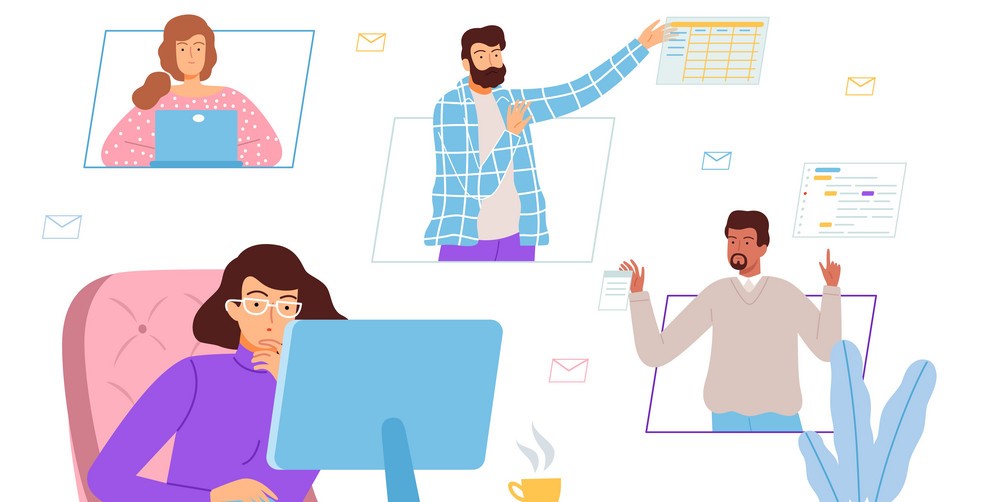
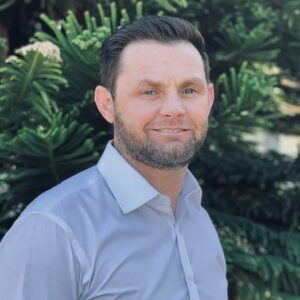 Brett Pomeroy, Associate Principal, has more than 17 years of professional experience in the environmental planning field with an emphasis in environmental compliance pursuant to CEQA and the National Environmental Policy Act (NEPA). Brett possesses a strong technical background and has provided quantitative analytical modeling support for air quality, GHG, health risk assessments, noise and vibration, and shade/shadow impact analyses for several complex and multi -faceted projects using industry accepted modeling software. Specifically, Brett has experience with AERMOD and ISC air dispersion modeling systems, CalEEMod, URBEMIS, CALINE4-based model, noise modeling based on the Federal Highway Administration’s Traffic Noise Model (TNM), and the Amethyst Shadow Calculator. In addition to providing technical support, Brett conducts environmental analyses for a wide array of environmental issues, conducting land use surveys, ambient noise monitoring, site photography, general environmental research and document management. Brett’s experience includes preparing and managing environmental documentation for both private- and public-sector clients. He has provided environmental analyses to support several types of environmental documents including Categorical Exemptions, Initial Studies, Negative Declarations (NDs), Mitigated Negative Declarations (MNDs), Mitigation Monitoring & Reporting Programs (MMRPs), Environmental Impact Reports (EIRs), and addendums.
Brett Pomeroy, Associate Principal, has more than 17 years of professional experience in the environmental planning field with an emphasis in environmental compliance pursuant to CEQA and the National Environmental Policy Act (NEPA). Brett possesses a strong technical background and has provided quantitative analytical modeling support for air quality, GHG, health risk assessments, noise and vibration, and shade/shadow impact analyses for several complex and multi -faceted projects using industry accepted modeling software. Specifically, Brett has experience with AERMOD and ISC air dispersion modeling systems, CalEEMod, URBEMIS, CALINE4-based model, noise modeling based on the Federal Highway Administration’s Traffic Noise Model (TNM), and the Amethyst Shadow Calculator. In addition to providing technical support, Brett conducts environmental analyses for a wide array of environmental issues, conducting land use surveys, ambient noise monitoring, site photography, general environmental research and document management. Brett’s experience includes preparing and managing environmental documentation for both private- and public-sector clients. He has provided environmental analyses to support several types of environmental documents including Categorical Exemptions, Initial Studies, Negative Declarations (NDs), Mitigated Negative Declarations (MNDs), Mitigation Monitoring & Reporting Programs (MMRPs), Environmental Impact Reports (EIRs), and addendums. Kara Yates Hines, Director of Operations and Publications Manager, leads operations at Impact Sciences and oversees the production and publication of all environmental documents. She has more than 14 years of combined experience in publishing, quality control coordination, science and public health technical writing and editorial review, and digital marketing methodologies. As the primary manager for document production, Kara implements the firm’s operational processes and manages the document publishing flow, including QA/QC review, graphic design, formatting, and visual layout. She leads in-house production of CEQA/NEPA reports, including booklet assembly and digital productions. With a unique understanding of both the CEQA review process and best practices in publishing technically complex documents, Kara ensures the firm’s environmental reports are publicly accessible, easy to read and understand, well organized, and visually appealing. Kara has a masters degree in Publishing from The George Washington University and a bachelors degree in English from Spelman College. She is a member of the Association of Environmental Planners (Los Angeles Chapter).
Kara Yates Hines, Director of Operations and Publications Manager, leads operations at Impact Sciences and oversees the production and publication of all environmental documents. She has more than 14 years of combined experience in publishing, quality control coordination, science and public health technical writing and editorial review, and digital marketing methodologies. As the primary manager for document production, Kara implements the firm’s operational processes and manages the document publishing flow, including QA/QC review, graphic design, formatting, and visual layout. She leads in-house production of CEQA/NEPA reports, including booklet assembly and digital productions. With a unique understanding of both the CEQA review process and best practices in publishing technically complex documents, Kara ensures the firm’s environmental reports are publicly accessible, easy to read and understand, well organized, and visually appealing. Kara has a masters degree in Publishing from The George Washington University and a bachelors degree in English from Spelman College. She is a member of the Association of Environmental Planners (Los Angeles Chapter).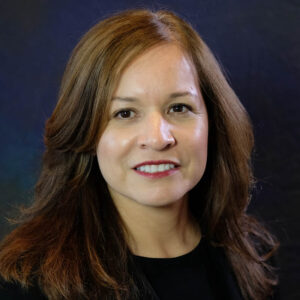 Martha Lira, Chief Financial Officer, oversees all aspects of Impact Sciences’ finances, including the development and management of budgets, preparation of financial statements, and all other financial reporting to the firm’s Chief Operating Officer. Martha brings to Impact Sciences over 25 years of business management experience in the public, private, and nonprofit sectors. Prior to joining Impact Sciences, Martha worked for a women-owned CPA firm as a staff accountant, managing small business accounts and tax filing requirements.
Martha Lira, Chief Financial Officer, oversees all aspects of Impact Sciences’ finances, including the development and management of budgets, preparation of financial statements, and all other financial reporting to the firm’s Chief Operating Officer. Martha brings to Impact Sciences over 25 years of business management experience in the public, private, and nonprofit sectors. Prior to joining Impact Sciences, Martha worked for a women-owned CPA firm as a staff accountant, managing small business accounts and tax filing requirements.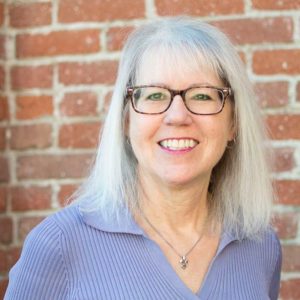 Lynn Kaufman, Associate Principal, has more than 25 years of experience in both the management and preparation of environmental review documents pursuant to CEQA and NEPA for clients in both the public and private sector. Ms. Kaufman has written numerous CEQA analyses for high profile and environmentally sensitive projects in both urban and rural settings, and acts as a day-to-day contact for in-house and agency staff, subconsultants, and applicants, providing valuable insight to identify environmental constraints and feasible mitigation measures.
Lynn Kaufman, Associate Principal, has more than 25 years of experience in both the management and preparation of environmental review documents pursuant to CEQA and NEPA for clients in both the public and private sector. Ms. Kaufman has written numerous CEQA analyses for high profile and environmentally sensitive projects in both urban and rural settings, and acts as a day-to-day contact for in-house and agency staff, subconsultants, and applicants, providing valuable insight to identify environmental constraints and feasible mitigation measures.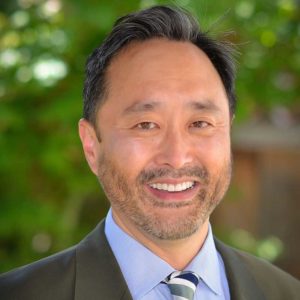 Douglas Kim, AICP, Managing Principal, oversees Northern California environmental services for Impact Sciences. His 30-year career includes political, policy, and technical expertise in transportation, air quality, and land use planning. Mr. Kim has prepared and reviewed CEQA and NEPA documents for land use and transportation projects and authored guidance documents on how to perform air quality analyses for two air pollution control districts. He has performed noise, vibration, climate change, and traffic impact analyses for over 100 CEQA environmental analyses throughout California. Mr. Kim has developed long- and short-range multi-modal transportation plans, including performing alternatives analyses, and managing technical modeling. He has managed preparation of air quality plans, developed air quality regulations, climate action plans, and performed air quality analysis and dispersion modeling for land use plans and development projects throughout the state.
Douglas Kim, AICP, Managing Principal, oversees Northern California environmental services for Impact Sciences. His 30-year career includes political, policy, and technical expertise in transportation, air quality, and land use planning. Mr. Kim has prepared and reviewed CEQA and NEPA documents for land use and transportation projects and authored guidance documents on how to perform air quality analyses for two air pollution control districts. He has performed noise, vibration, climate change, and traffic impact analyses for over 100 CEQA environmental analyses throughout California. Mr. Kim has developed long- and short-range multi-modal transportation plans, including performing alternatives analyses, and managing technical modeling. He has managed preparation of air quality plans, developed air quality regulations, climate action plans, and performed air quality analysis and dispersion modeling for land use plans and development projects throughout the state. John R. Anderson, M.A., M.Phil., is Associate Principal for the Northern California-Oakland office. With more than 30 years of experience, John brings to Impact Sciences extensive knowledge of the regulatory, environmental health and safety, and environmental planning industries. He has a long track record for managing large environmental programs and projects across North America. Most recently, John has focused his attention on the Corrections, Education, Energy and Water planning and compliance markets. In California, he has managed the Environmental Planning Program for the Los Angeles Unified School District; prepared Program EIRs for various water authorities and school districts; performed due diligence for public and private sector clients in real estate and corporate acquisitions; and has been retained as an expert witness in relation to school, transportation, and remediation projects. John has a seasoned familiarity with project management, staff development, and financial and administrative management. He’s provided strategic leadership for projects in the areas of CEQA/NEPA environmental impact reporting, risk management, preliminary endangerment assessments, Phase I and follow-on invasive site investigations, litigation support, QA/QC programs, public participation programs, and site safety programs. Impact Sciences is proud to have John as a vital member of our firm.
John R. Anderson, M.A., M.Phil., is Associate Principal for the Northern California-Oakland office. With more than 30 years of experience, John brings to Impact Sciences extensive knowledge of the regulatory, environmental health and safety, and environmental planning industries. He has a long track record for managing large environmental programs and projects across North America. Most recently, John has focused his attention on the Corrections, Education, Energy and Water planning and compliance markets. In California, he has managed the Environmental Planning Program for the Los Angeles Unified School District; prepared Program EIRs for various water authorities and school districts; performed due diligence for public and private sector clients in real estate and corporate acquisitions; and has been retained as an expert witness in relation to school, transportation, and remediation projects. John has a seasoned familiarity with project management, staff development, and financial and administrative management. He’s provided strategic leadership for projects in the areas of CEQA/NEPA environmental impact reporting, risk management, preliminary endangerment assessments, Phase I and follow-on invasive site investigations, litigation support, QA/QC programs, public participation programs, and site safety programs. Impact Sciences is proud to have John as a vital member of our firm.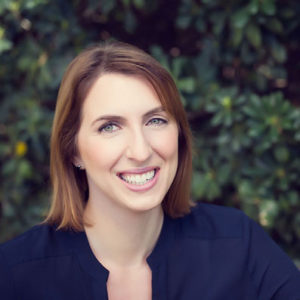 Jessica Kirchner, AICP, President, also serves as the Managing Principal for the firm. Jessica’s corporate responsibilities include contract compliance and financial management with an eye toward strategic growth. Jessica has more than two decades of project work in CEQA/NEPA compliance and places an emphasis on meeting client needs and providing real-world solutions to common CEQA pitfalls. A hands-on owner, Jessica frequently serves in multiple roles on projects, including contract and project manager, as well as conducting and writing environmental analyses all while overseeing the firm’s most high-profile clients, revenue and growth of the firm. With a background in journalism, Jessica’s emphasis on clear, concise documents that are not overly complicated has become a company hallmark, along with the ability to deliver projects on unbelievably tight deadlines. She is highly skilled at taking technical documents and concepts and translating them into reader-friendly concepts.
Jessica Kirchner, AICP, President, also serves as the Managing Principal for the firm. Jessica’s corporate responsibilities include contract compliance and financial management with an eye toward strategic growth. Jessica has more than two decades of project work in CEQA/NEPA compliance and places an emphasis on meeting client needs and providing real-world solutions to common CEQA pitfalls. A hands-on owner, Jessica frequently serves in multiple roles on projects, including contract and project manager, as well as conducting and writing environmental analyses all while overseeing the firm’s most high-profile clients, revenue and growth of the firm. With a background in journalism, Jessica’s emphasis on clear, concise documents that are not overly complicated has become a company hallmark, along with the ability to deliver projects on unbelievably tight deadlines. She is highly skilled at taking technical documents and concepts and translating them into reader-friendly concepts.